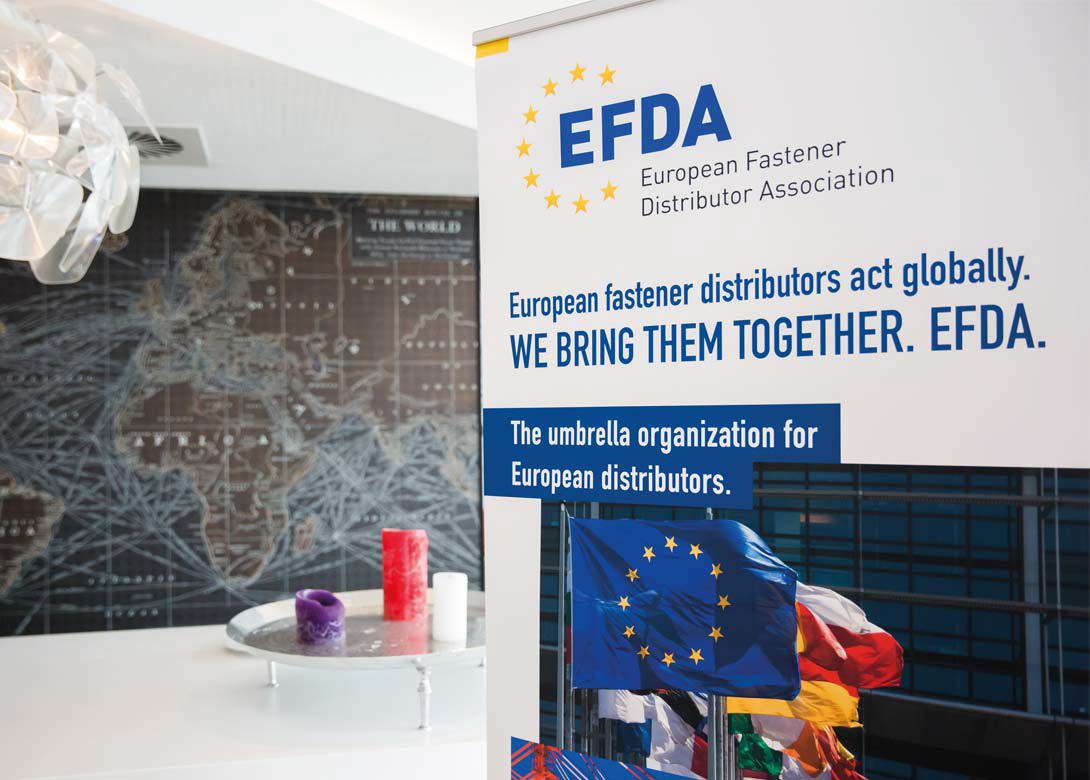
The European Fastener Distributor Association staged its sixth triennial conference in Rotterdam, the Netherlands. One hundred and twenty delegates and international guests attended a tightly organised and convivial event that demonstrated the membership growth, increasing relevance and expanding global reach of EFDA.
At its pre-conference ‘Assembly of Delegates’ from the national associations that comprise EFDA, Dr Volker Lederer was unanimously re-elected as president for a further two year term, and Gian-Marco Dalpane from the Italian distributors association, UDIB, was elected, also unanimously, as the new EFDA vice-president.
The conference was hosted at the stylish Mainport Hotel, on the banks of the River Maas – appropriately located, as Dr Lederer said in his welcoming address, not just in the major sea container port of Europe, but also the home city of Robert Klaassen, president of the Dutch fastener importers association, NEVIB, which co-hosted the event.
Reiterating EFDA’s core commitment to free and fair global trade, Dr Lederer detailed how the organisation had grown strongly, substantially increased its activities and extended its international connections. He noted that: “EFDA represents an industry that is no longer a simple box shifter. We are now a strategic contributor that literally holds European industry together; investing in equipment, connectivity and people to effectively manage complex global supply chains.” There were, he said: “More than 2,000 major fastener distribution companies across Europe, employing more than 44,000 skilled people and holding more than €2 billion of inventory, in order to supply more than 130,000 different items, worth more than €10 billion every year.”
The level of EFDA’s representation has certainly grown. Newly created NEVIB joined in 2014 and, two years ago, UDIB rejoined EFDA to a resounding welcome from its fellow national associations. MEFDA, which provides representation to fastener distributors in countries where there is not a national association, has also expanded quickly, with members now from seven countries. “The more we are the stronger we are,” asserted Dr Lederer.
EFDA’s strength and activity was vital, he explained, in an international geo-political situation that has become more insecure and unstable. “We are living in a period of increasing protectionism, driven by a country that we never expected to jeopardise free trade.” He went on: “We face increasing trade barriers across the Atlantic Ocean and we fear the WTO might lose its weight in ensuring free and fair international trade.” Within the EU, BREXIT also raised concerns: “With the UK leaving the club, the EU is taking a more protectionist way.”
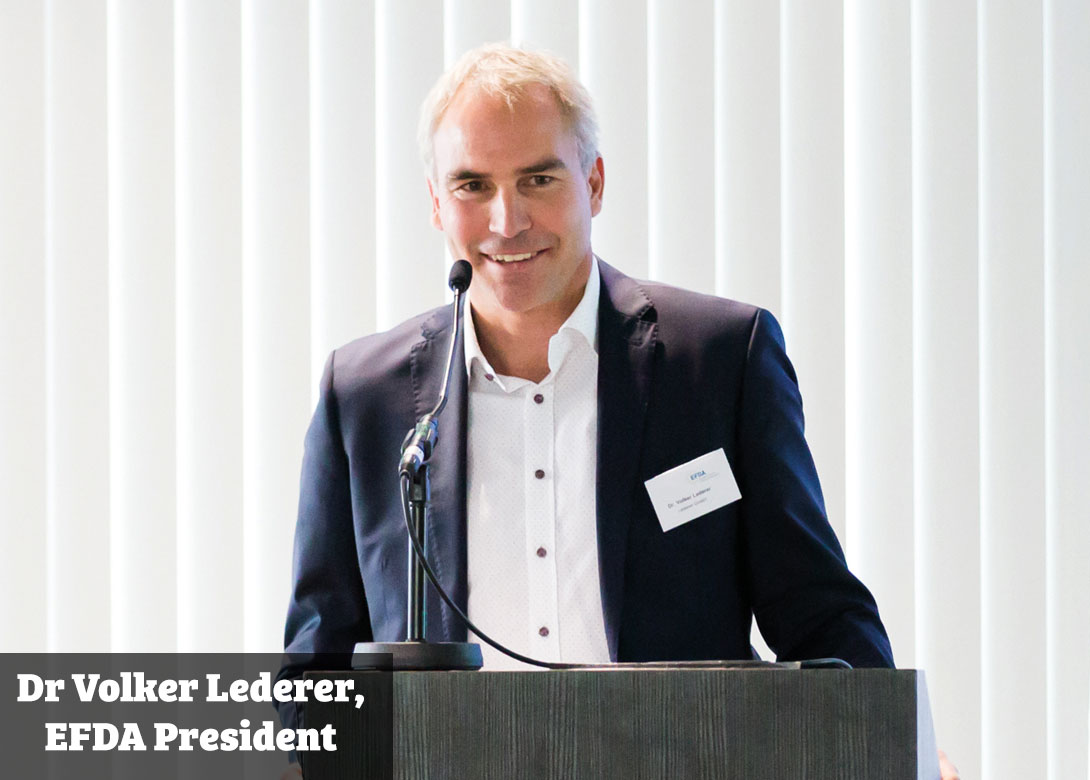
Dr Lederer was emphatic: “Free access to all global procurement markets must be maintained.” He committed EFDA to “continually and consistently present its arguments to European politicians and administrators”, and to “continue to increase our presence at international fairs and conferences and to engage with fastener associations outside Europe”.
In that context, Dr Lederer welcomed senior representatives from the China Fastener Industry Association and the Korea Federation of Fastener Industry Cooperatives; together with long-standing friends from the TIFI and TFTA from Taiwan, the NFDA from the US, and the EIFI.
Strong line-up of speakers
Wolfgang Mueller, head of the general policy unit at DG Trade, European Commission, took as his theme: ‘We never step into the same river twice’. The 2,500 year old quotation from Heraclitus of Ephesus, said Mr Mueller, was truer today than ever.
Previously trade policy and negotiations had been the province of technical specialists and largely unnoticed by politicians and media. “However, things have changed,” starting with the attention attracted by the attempted negotiation of a Transatlantic Trade and Investment Partnership. Further contention emanated, Mr Mueller said, from the Trump administration’s deep aversion to multilateral trade agreements, now influencing US attitude to WTO accords. “The United States has started,” he explained, “a wave of investigations that cannot be reconciled with WTO rules.” Exploring the implications of the US ‘Section 232’ investigation he outlined the EU response: Initiating dispute proceedings at the WTO, introducing rebalancing measures, and initiating a safeguarding investigation on steel and aluminium, the latter reflecting concerns product might be diverted to EU markets. All EU actions, he emphasised, meticulously followed WTO rules.
“Another game changer in trade policy is the advent of China,” Mr Mueller said. “China’s economic policy raises globally many concerns.” He reiterated EU adherence to WTO rules. However, he went onto say, after a period of very little positive developments from the WTO, there was a need to update the old rules, albeit a “difficult and challenging path”.
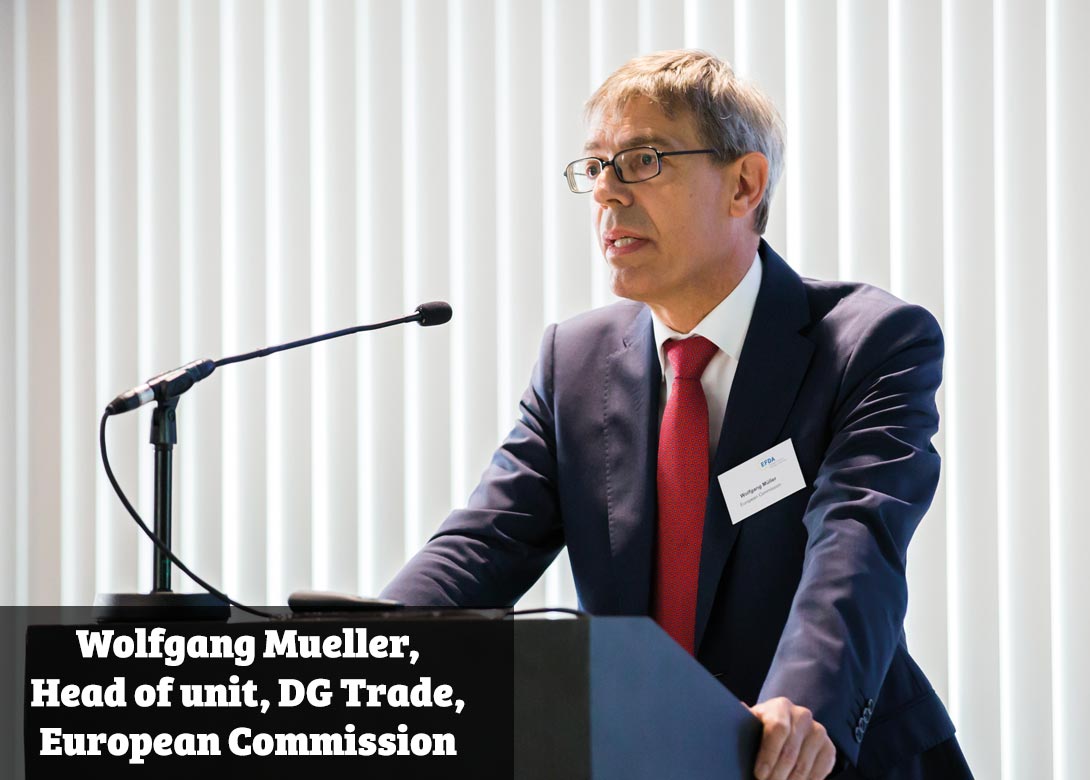
Mr Mueller emphasised EU efforts to open Asian markets to European businesses through an ambitious programme of free trade agreement negotiations, citing agreements with Japan, Korea and Singapore.
Speaking of the need for fairness in trade relationships, he turned to the modernisation of EU trade defence instruments, detailing changes brought into force on 7th June. These changes, he argued, were good for EU business, were stronger and more effective and reflected EU values. Shorter investigation periods were beneficial to all EU businesses, be they manufacturers or importers. Particularly relevant to the audience, was his description of how the EU could now decide, where it identified significant distortions in the exporting market, not to apply the lesser duty rule – with the potential for higher trade defence duties. He also noted, in regard to the ‘pre-disclosure’ of impending provisional duties, that this clause had been opposed by the European Parliament and that there was provision for its review and possible elimination if stockpiling was detected.
The second speaker was Mr Ronald Roosdorp, director for international trade policy, Ministry of Foreign Affairs, the Netherlands. He rapidly won the audience’s attention with a lively and sometimes ironic reflection on the state of world trade. “The system is broken,” he said, adding: “I would not say it is beyond repair, but it needs a good fix.”

Some of his presentation inevitably overlapped with that of Mr Mueller, but there was a distinctively Dutch take on the issues. Identifying challenges, Mr Roosdorp, said, “there are many, but I want to mention three – the WTO, China and the United States”. He went on: “I could easily have added BREXIT, which is a huge problem.” While the latter’s challenges were political and legal he emphasised the practical problems of needing more customs officials and port space to hold trucks during inspection, none of which had been a previous consideration. He also expressed a regret. “We the Netherlands, as one of the most trade liberal economies in the EU, are losing an important ally.”
On the WTO he pointed out that the so-called Doha rounds of negotiation had already gone on for 18 years, adding “even when these are completed we would only have solved the problems of the last century”. New issues, such as e-commerce, had not even begun to be discussed. Nevertheless, he illustrated graphically on a slide, the alternative to a functioning WTO was a ‘spaghetti ball’ of bilateral trade agreements.
On anti-dumping, the Dutch position Mr Roosdorp emphasised, was: “Protection, not protectionism”. Only in cases of predatory dumping should reasonable dumping duties be applied, and they should take into account the interest of user industries.
In a gently caustic consideration of the potential for US-EU trade wars, he argued the EU should: “Maintain dialogue, defend economic interest, stand for the WTO, protect EU if necessary, address root causes and maintain dialogue.” With remarkable agility, Mr Roosdorp acknowledged that the double inclusion of ‘maintain dialogue’ was an accident but was particularly appropriate as “we need the dialogue to be maintained from the beginning to the end”.
Dr Bart Kuipers, of the Erasmus University Rotterdam, concluded the session with a fascinating insight to the Port of Rotterdam, its history, extraordinary scale and geographic expanse, and freight throughput. He too, explored challenges faced by the Port, and identified measures it needed to take, ranging from digital innovation to become: “The Smartest Port”, through making it more environmentally responsible, and attracting investment for the future of Rotterdam city.
The manufacturers’ viewpoint
It is customary for the presidents of the EIFI and EFDA to address each organisation’s conference. Anders Karlsson opened by saying it was his third but final appearance as he would retire from the EIFI presidency after ten years. While the audience might not entirely agree with Mr Karlsson’s interpretation of some issues, few could fail to appreciate his wry humour and occasionally off-beat delivery. He reviewed a number of important EIFI initiatives and work programmes, many of which are now detailed on the Institute’s new web page, www.eifi.org, on which said Mr Karlsson: “The only thing that has not changed is the 15 year old photograph of myself, because I looked a lot better then than I do now!”
A key priority is the further development of EIFI’s Wire Rod Index, key to demonstrating the impact of raw material cost changes on fasteners. A version is publicly available on the German Deutscher Schraubenverband website, but the EIFI is now also strengthening the integrity of the report by working with independent subscription research service, The Steel Index.
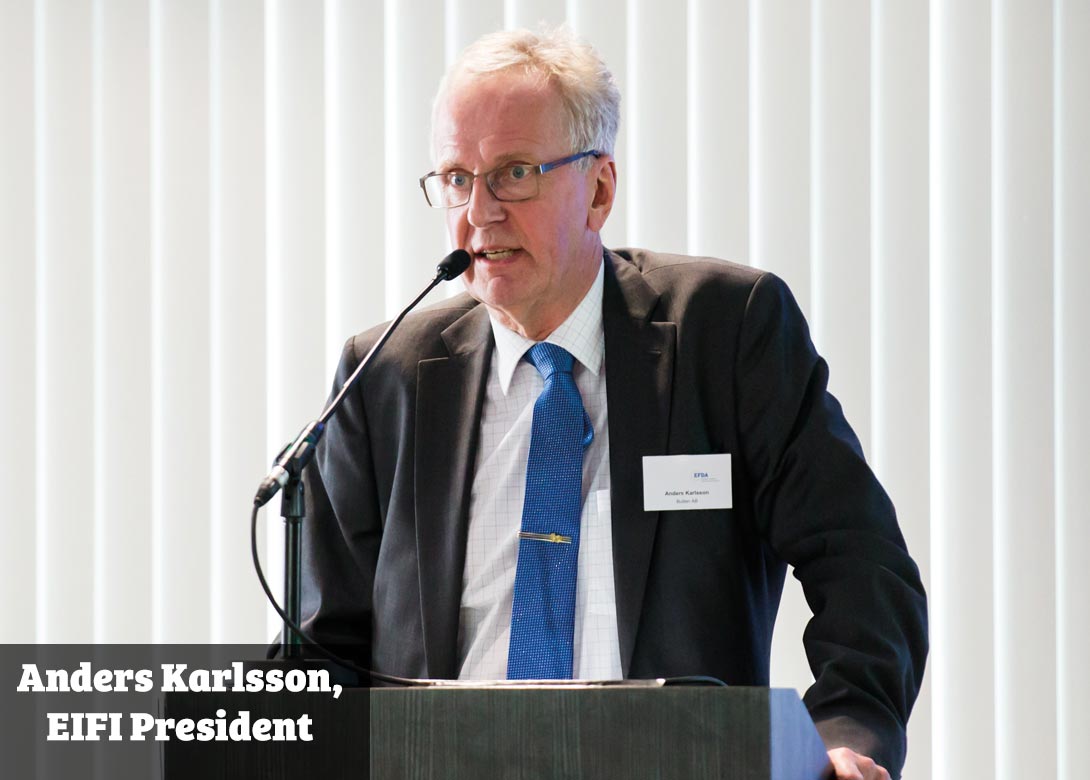
Mr Karlsson referred to work previously carried out jointly with EFDA to update the Combined Nomenclature coding for fasteners, which led to a recommendation to the European Commission in 2011. The Commission, he said, had just come back to say it was minded to accept the recommendation, so the EIFI would review whether it was still appropriate. Mr Karlsson believed it would prove so and would deliver better statistical understanding of EU fastener imports and exports.
Using Eurostat data from 2016, Mr Karlsson argued that the removal of anti-dumping duties on China had driven down the average price of the fasteners involved. “I don’t know what the European Commission will make of it,” he said archly, but did acknowledge that imports had not reverted to 2006-7 levels.
He shared some research discussed by EIFI members at their recent Congress in Croatia. Concerns included the risk of trade wars and the unpredictable US foreign policy. “The old game rules… are not valid any more when we talk about trade and relationships between nations.” Nevertheless, research based on responses from some sixty EIFI member companies, showed the European manufacturing industry remained fairly confident about profitability, although the index reading had eased a little compared with 2017. The industry certainly, he said, is continuing to invest in new technologies and capacity “at a good pace”.
Uppermost amongst challenges is the upward cost trend in raw materials and the difficulties in getting major customer sectors to accept that they needed to be passed on. “We cannot as an industry,” he said, “absorb the €200 per tonne increases in raw material we have experienced recently”. There were other challenges in relationship to some business practices adopted by major OEMs; and demands for “yearly productivity improvement” really translated into constant cost-down pressure.
Regarding the future, he repeated previously expressed views: “Companies are getting global, the bigger ones are getting bigger – that trend of consolidation definitely continues. The small ones will survive because they will find niches and they are agile. Those in the middle, they have a problem.” He also noted the changing landscape of fastener manufacturing ownership, with major acquisitions in Europe by both Chinese and Taiwan corporations, although he emphasised that “Europe was also moving strongly into the United States”.
His final analysis: “It is about being global because our customers are global.”
New Conference Forum
With the objective of bringing together, in a limited timeframe, all of the global fastener perspectives of the conference participants, EFDA introduced a new Conference Forum, with Fastener + Fixing Magazine’s Phil Matten acting as moderator. The panellists, representing fastener associations from Europe, China, Korea, Taiwan and the United States, tackled issues ranging from raw material trends, through global economic conditions and the risks of protectionism, to developments in vehicle powertrains, and how to encourage young skilled employees into the fastener industry.
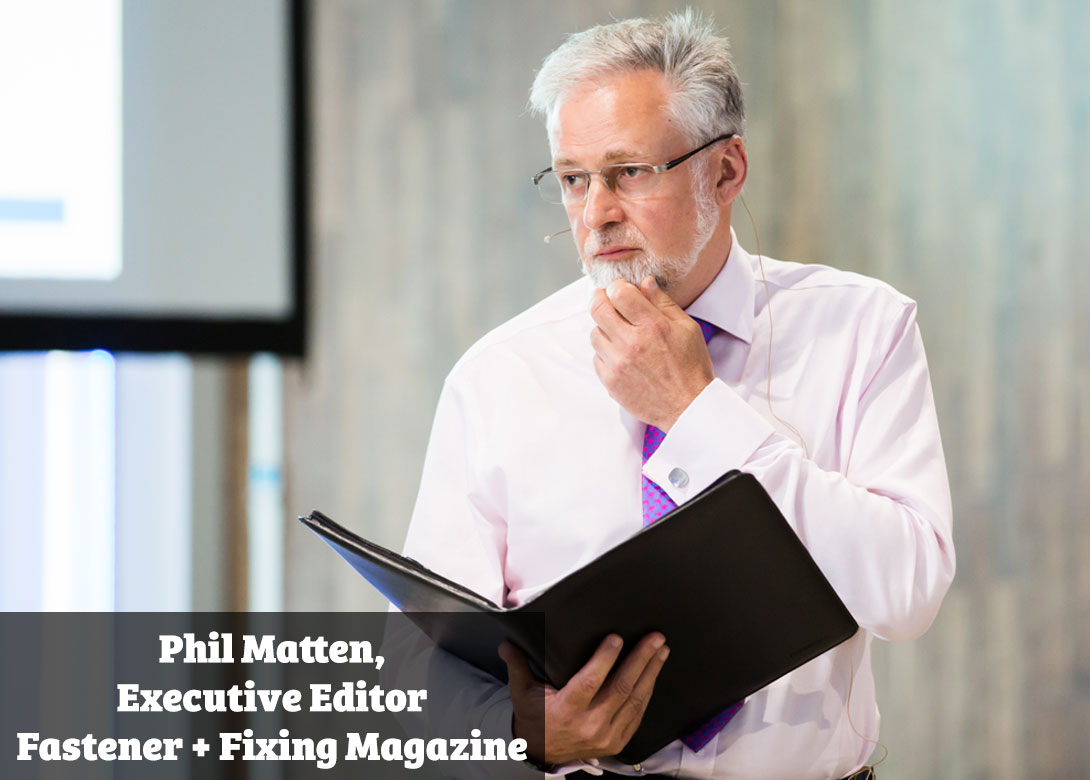
Raw materials
The forum provided the audience with a comprehensive insight to global raw material trends. European wire rod costs had risen by around €100/tonne in the first quarter 2018, following a similar level of increase in 2017. In China, government policies restricting winter steel production, combined with the long-term elimination of some low-grade output, had irrevocably changed the steel production market. Prices increased sharply in 2017 Q4 and were now stabilising at higher levels.
The long-term cooperation between Taiwan’s China Steel Corporation and its domestic fastener industry, meant greater stability in material costs, making it “perhaps very lucky” said Joe Chen, who reckoned 2018 H1 increases equated to around US$40/tonne.
Korean fastener producers had experienced significant wire cost increases in October 2017 and again in April 2018, Mr Hansung Jung reported. Increases from Japanese steel mills had been sharper, due to shortages of supply in the domestic market.
For the United States, NFDA’s Adam Pratt said: “It’s painful!” Wire rod costs increased as soon as President Trump announced plans for tariffs, with further inflation as they were brought in. Fastener manufacturers needing to source special steels from Canada, now incurred a tariff-driven 25% price increase.
The consensus was carbon steel costs were less likely to increase significantly in the second half 2018. However, as Volker Lederer explained, stainless steel was different. Sustained increases in nickel costs had been driven by a major fall in nickel inventories. A continued market deficit was expected through 2018, and in the context of strong global stainless steel demand, costs for fastener producers could be expected to continue to rise.
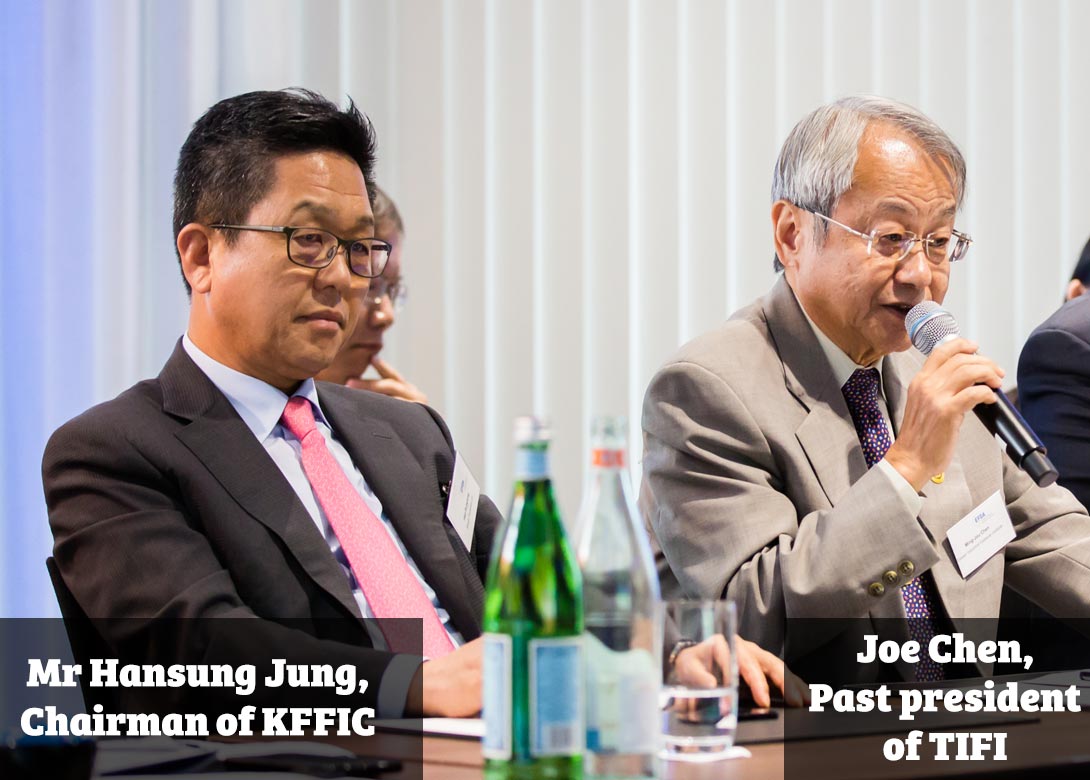
Fastener industry trends
Panel views were consistent that the global fastener industry has enjoyed a busy start to 2018.
Mr Xue Kangsheng confirmed growth in Chinese fastener exports and saw stable development in the Chinese manufacturing industry. He explained structural transformations being driven in the Chinese fastener industry, including greater emphasis on innovation-led, intelligent and environmentally responsible, manufacturing.
Ivan Lee, speaking for TFTA Chairman Jimmy Chang, said the Taiwanese fastener industry expects the balance of 2018 to be stable, with perhaps marginal growth. Longer term it was concerned that increased global protectionism could put pressure on its fastener industry.
Adam Pratt provided a thoughtful and balanced insight into current US trade defence actions, relating it to historic experiences, from which the current administration recognised the risk of material-targeted tariffs generating rapid growth in imported finished goods. He concurred that “everyone has been incredibly busy so far in 2018”. However, he noted that the NFDA’s analysis of economic trend data indicated a slowing growth curve for 2018, lending credibility to forecasts the US could experience mild recessionary conditions later.
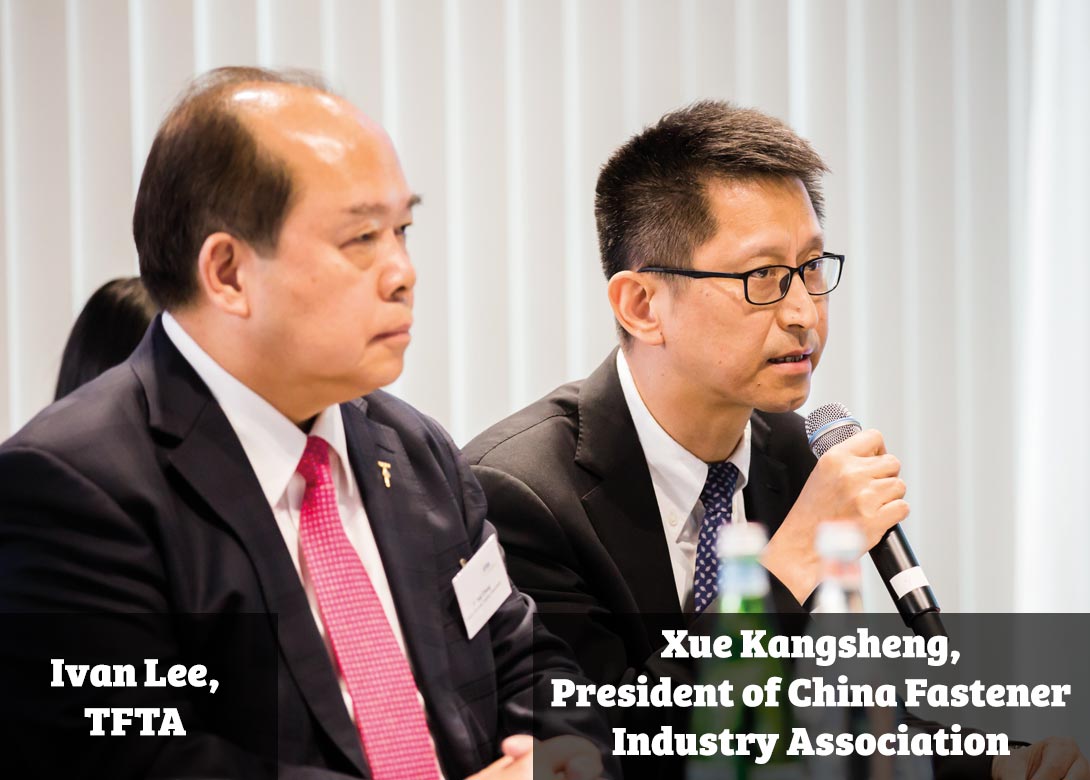
Vehicle powertrain developments
For Anders Karlsson, “there is no short term alternative in meeting CO2 targets to the modern diesel engine”. He added: “The diesel has taken a lot of hits it does not deserve,” with the automotive industry having only itself to blame. Looking forward he said: “Everybody believes in the electric vehicle. It is coming, but it is not coming that quick.” Big changes were unlikely in the next five years.
Mr Jung expressed concern that the trend towards EVs would impact fastener manufacturers but saw the longer term development of autonomous vehicles and changes in car usage, as threatening a more significant decline in automotive fastener demand. Mr Xue concurred that movement away from traditional diesels would impact demand for high-end fasteners. Fasteners required in new energy vehicles, while numerous, were less technical and could be produced by many more fastener plants. He saw opportunities for the adhesives industry but longer term less favourable conditions for traditional fastener enterprises.
The audience contributed actively to this topic. The Polish market, it was noted, was heavily populated with older diesel engine vehicles, creating additional pressure for change. Published research suggests change will be driven by initiatives to improve air quality in cities and from expectations of younger people. By 2030, it was suggested, 35% of vehicle production will be electric or hybrid powered, but with a 4:1 ratio in favour of the latter. Widespread fully autonomous vehicle usage appeared improbable in the next 30 years, but usage within city zones was far more likely in half that time.
Fastener industry skills
“Fasteners is not a very sexy business,” opened Volker Lederer. “Both in manufacturing and distribution it is difficult to attract good potential employees, especially as economies are currently booming.” FDS, the German fastener distributors’ association, had recently set up a ‘Junior Group’ for younger business people to discuss these issues and try to find modern ways to enhance the attraction of the fastener sector.
Mr Xue believed that the growth of technology in manufacturing, marketing and logistics compelled recognition of the importance of human resources. He agreed that the fastener industry was not first choice for the youth generation, but outlined proactive measures from the CFIA, working closely with educational institutions, to change these perceptions. It was also, he noted, crucial to incentivise skilled workers and talented management professionals to stay in the fastener industry. Mr Jung also agreed technology and automation was driving the need for highly skilled recruits and outlined some of the measures the Korean fastener industry was taking in preparation for the Industry 4.0 revolution.
In a strongly family-owned Taiwan industry, said Joe Chen, there was long-term experience of younger family members working in other fastener companies to broaden their skills base, for the benefit of their own family company and the industry as a whole.
Adam Pratt believed that “as associations in the industry we have got a really good opportunity to positively affect this issue in each of our own home regions”. He described how regional and national associations in the USA supported the Fastener Training Institute to provide an intensive, one-week fastener course. However, he added: “I take issue with the fastener industry not being sexy, although we say it in the US too. We are working with Tesla, with Apple, with Daimler – really cool companies doing great things, and we are part of that.” To general applause he concluded: “We need to change our message and recognise we do some pretty cool stuff too.”
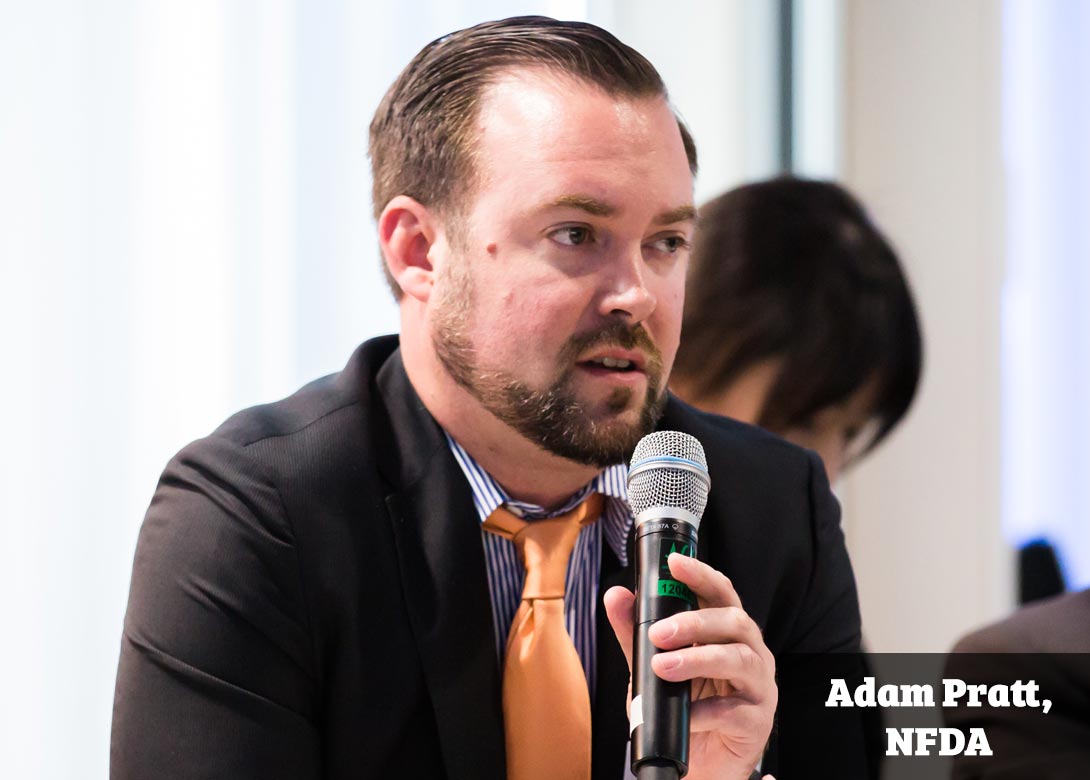
It fell to Anders Karlsson for the final thought: “It takes a year to train a header operator and as an industry we must work harder to keep them and continue to develop them.” Bulten Polska, he said, had recently been recognised by the Polish president as the most employee friendly company in Poland. Even the cleaners are fully contracted employees he said. “That’s the way you keep your people. Invest trust in them and they will give trust back.”
Time for relaxed networking
The conference concluded with a cocktail reception, hosted by NEVIB, and a convivial dinner on the 16th floor of the hotel, where guests were treated to a splendid view across the night time Rotterdam skyline.
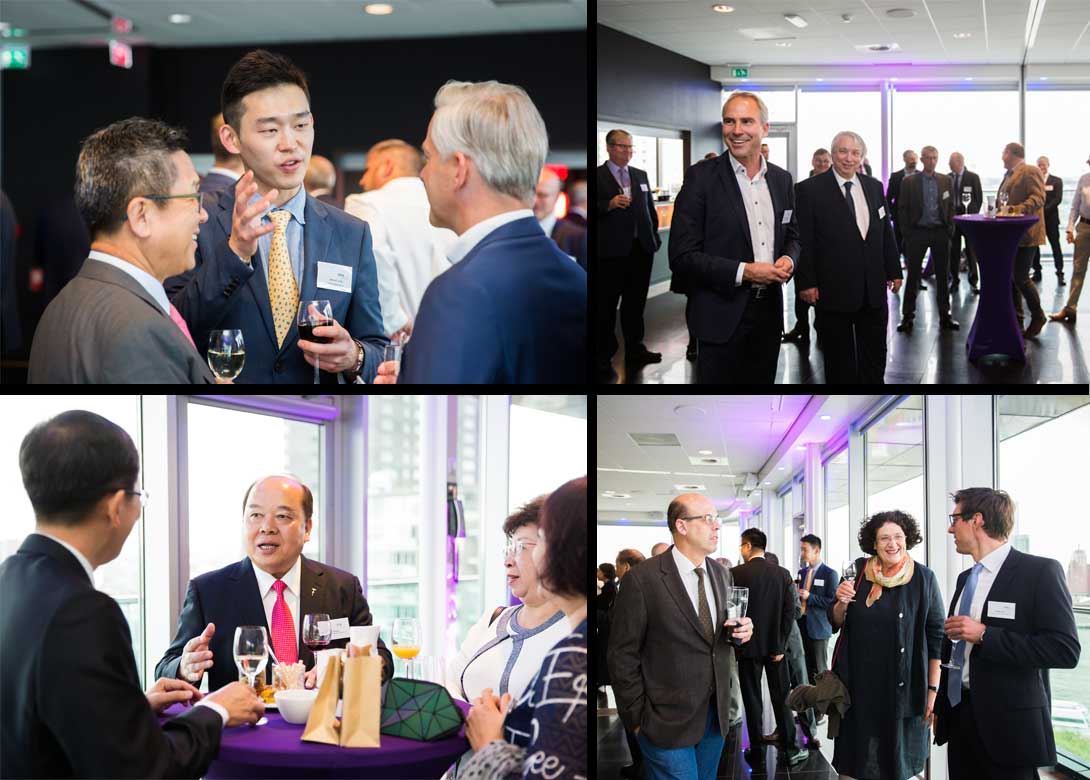
EFDA conference programme
Sponsored and compiled by Fastener + Fixing Magazine the twenty page programme booklet contributed to the professionalism of an excellently organised event. For those unable to attend the conference it provides information from each participating association – guest organisations as well as EFDA members – and an insight to market conditions in each of their countries. A PDF copy is available to download from www.fastenerandfixing.com/efda-2018.pdf

Will joined Fastener + Fixing Magazine in 2007 and over the last 15 years has experienced every facet of the fastener sector - interviewing key figures within the industry and visiting leading companies and exhibitions around the globe.
Will manages the content strategy across all platforms and is the guardian for the high editorial standards that the Magazine is renowned.
Don't have an account? Sign Up
Signing up to Fastener + Fixing Magazine enables you to manage your account details.